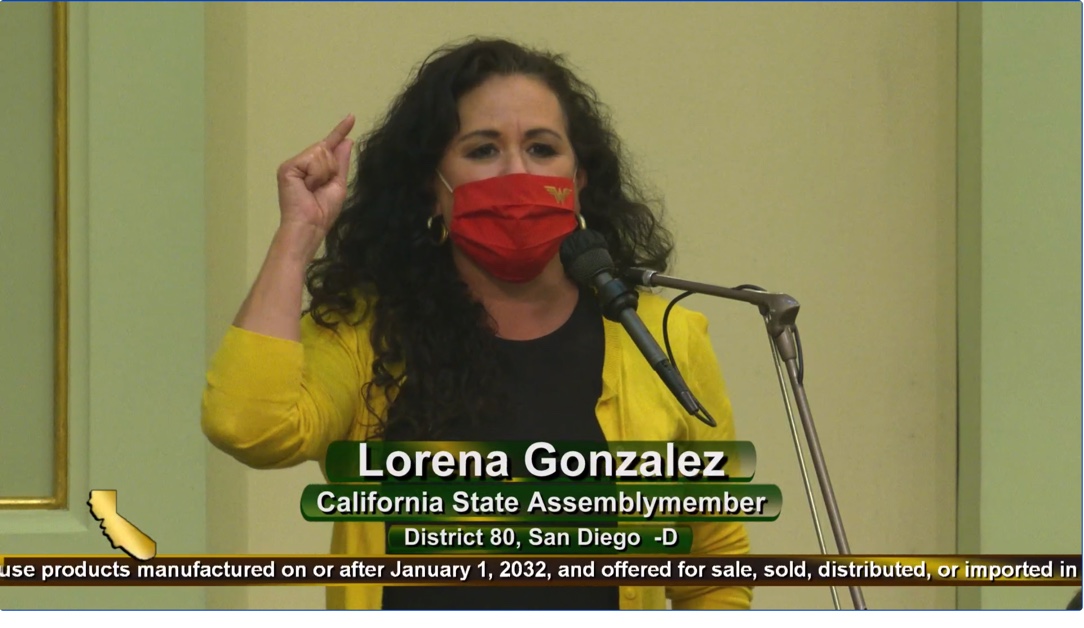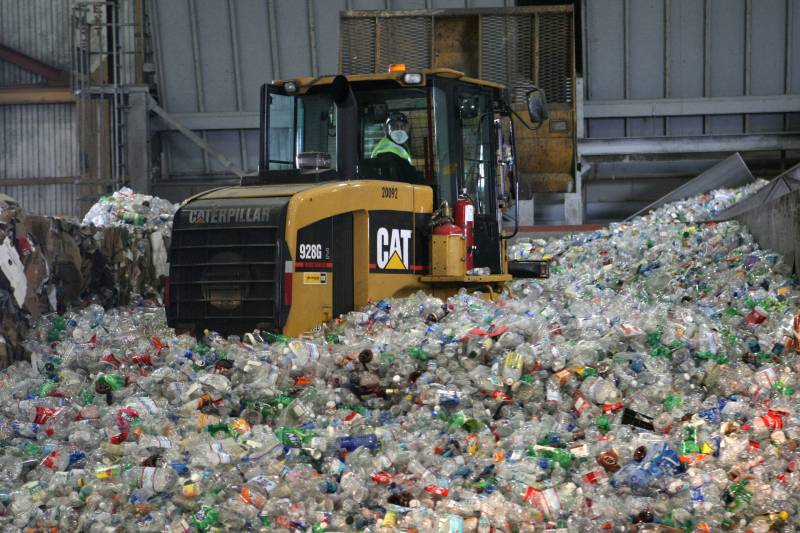A spokesperson for one of the bill’s co-sponsors, Sen. Ben Allen, D-Santa Monica, said in an email that he was “extraordinarily disappointed.”
Doug Cress, vice president of conservation at the Ocean Conservancy, said in a statement that California “missed an important opportunity to become a leader on one of the most pressing challenges facing the ocean today: plastic pollution.”
Last year, when the bill fell apart despite heavy grassroots support, advocates blamed opposition from the industry and infighting among supporters over late amendments added by the Newsom administration. After the bill failed, the administration expressed its support for coming back with another attempt.
This year, lawmakers narrowed the legislation to apply to single-use plastic products as opposed to those made of all materials. Expressing optimism that the bill would pass, Geoff Shester, campaign director for the environmental nonprofit Oceana, said during the final weeks of the session that supporters were engaging “in a full court press.”
A coalition of industry groups opposed the plan, stating in an Aug. 14 letter to lawmakers that the legislation didn’t do enough to enhance the infrastructure required to meet the new mandates.
In the letter, the Plastics Industry Association, American Chemistry Council, California Chamber of Commerce and over two dozen other groups said recent amendments were “complicated and open to significant interpretation by CalRecycle thereby creating uncertainty for the regulated community.”
Lockdown Slows Plan for Ballot Initiative
After the bill failed last year, advocates raised the prospect of a more aggressive strategy: banning single-use plastics altogether through an initiative on the November 2020 ballot.
“The opponents of the legislation will regret rejecting the deal that was offered this year,” Shester said after the measure’s failure in 2019.
Recology, a San Francisco-based waste management company, put $1 million behind the ballot effort.
But those plans were thrown into disarray by the state’s coronavirus lockdown, according to Eric Potashner, director of strategic affairs for Recology.
When Newsom issued a statewide shelter-in-place order last March, signature-gathering ground to a halt, still 150,000 names short of the roughly 620,000 needed to qualify for the November election.
“We slowly ramped it back up, but we missed the deadline for this year,” Potashner said. “We submitted this month, and we feel very confident that we have more than enough to qualify for the November 2022 election.”
Assemblywoman Gonzalez warned members before the vote that passage of the bill was their chance to “have a hand in what this looks like” instead of allowing “other people to do it for us.”
“I want to remind folks that we can act or we can wait for a proposition to be put on the ballot and pass, because it will pass,” she said.
Recycled Bottle Bill Passes
Environmentalists could at least take heart in the passage of another recycling bill, which is on its way to the governor after lawmakers approved it on Sunday.
The legislation, AB 793, requires manufacturers in California to incorporate recycled plastic into new bottles.
A similar version of that bill passed both state houses last year by wide margins but was vetoed by Newsom, who opposed one of the amendments.
“The time has come for shared responsibility,” said co-sponsor Phil Ting, D-San Francisco, in a statement. “Our environment suffers when companies keep making new plastic every time they need a drink container. They need to reuse what they’ve already made. If we don’t make this shift, we will have more plastic than fish in our oceans by 2050.”
If signed by Newsom, California will mandate plastic beverage bottles used for soda, water and juice contain at least 50% recycled material by the year 2030, a goal that Ting’s office says would be the most ambitious in the world.
A Lot of Plastic
Legislative activity around plastic pollution comes amid a growing awareness of the scope of the problem, which is exacerbated by the material’s extreme durability. A plastic coffee lid used by a consumer for only the half hour it takes to drink a latte can end up in the ocean, where it will break down into little bits of microplastic, taking hundreds of even thousands of years to decompose.
Less than 15% of California’s single-use plastic is recycled, according to the bill’s authors. Until recently, California shipped its recyclables oversees, but the market for the state’s soiled plastic has disappeared.
Researchers last year found that Monterey Bay is full of these confetti-sized-or-smaller plastic scraps, and Lake Tahoe has a similar problem. The average person in the U.S. ingests between 74,000 and 121,000 particles of plastic in food and beverages each year, according to one study.
According to the federal Environmental Protection Agency, plastic containers and packaging accounted for 14 million tons of waste in 2017, more than any other municipal waste category.
Plastic waste in oceans kills a million seabirds and 100,000 dolphins every year, according to the United Nations.
The problem will probably only get worse: A UC Santa Barbara study conducted in 2017 found that half of all the plastic ever produced was manufactured in the previous 13 years.

